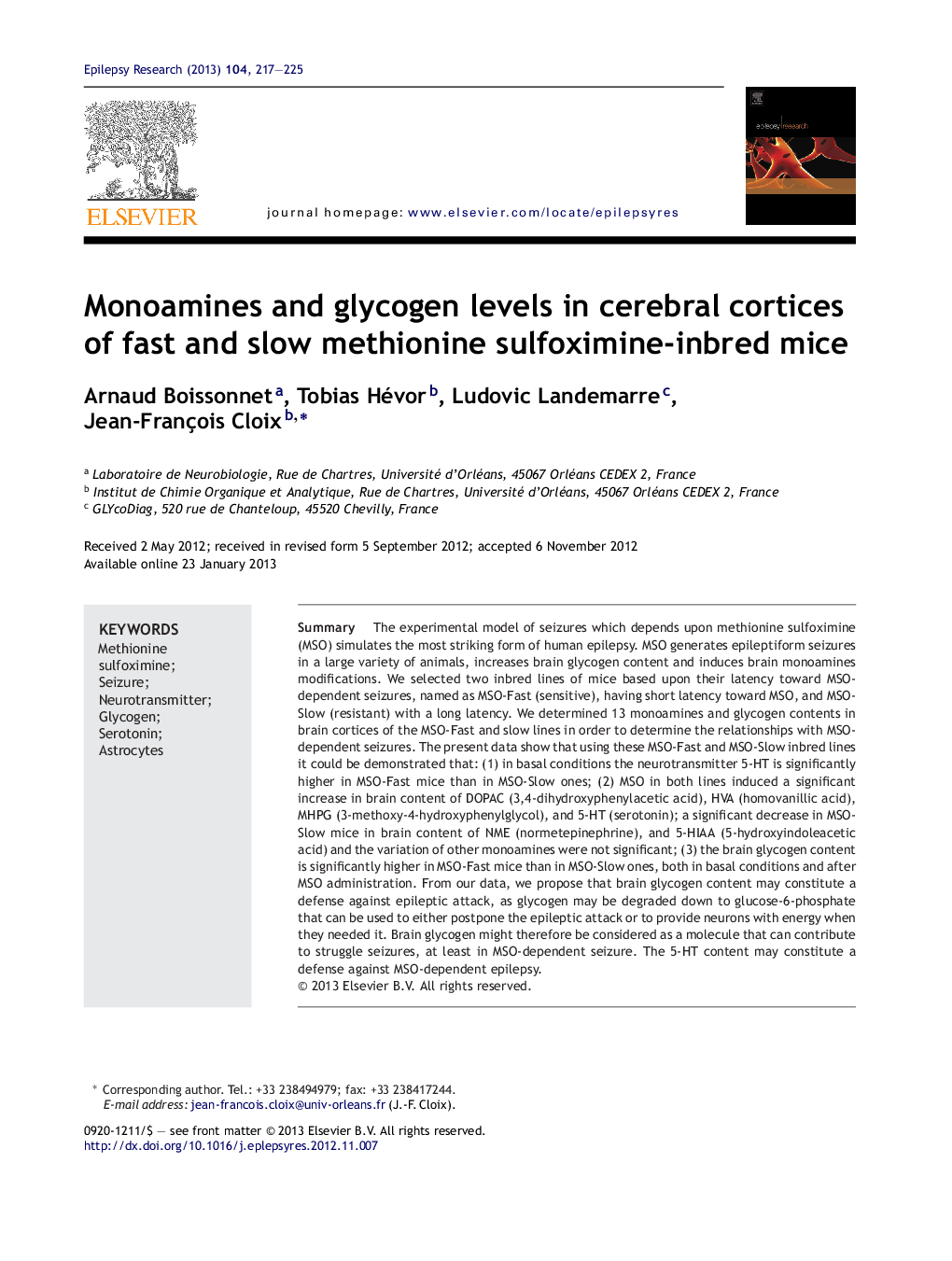| Article ID | Journal | Published Year | Pages | File Type |
|---|---|---|---|---|
| 3052133 | Epilepsy Research | 2013 | 9 Pages |
SummaryThe experimental model of seizures which depends upon methionine sulfoximine (MSO) simulates the most striking form of human epilepsy. MSO generates epileptiform seizures in a large variety of animals, increases brain glycogen content and induces brain monoamines modifications. We selected two inbred lines of mice based upon their latency toward MSO-dependent seizures, named as MSO-Fast (sensitive), having short latency toward MSO, and MSO-Slow (resistant) with a long latency. We determined 13 monoamines and glycogen contents in brain cortices of the MSO-Fast and slow lines in order to determine the relationships with MSO-dependent seizures. The present data show that using these MSO-Fast and MSO-Slow inbred lines it could be demonstrated that: (1) in basal conditions the neurotransmitter 5-HT is significantly higher in MSO-Fast mice than in MSO-Slow ones; (2) MSO in both lines induced a significant increase in brain content of DOPAC (3,4-dihydroxyphenylacetic acid), HVA (homovanillic acid), MHPG (3-methoxy-4-hydroxyphenylglycol), and 5-HT (serotonin); a significant decrease in MSO-Slow mice in brain content of NME (normetepinephrine), and 5-HIAA (5-hydroxyindoleacetic acid) and the variation of other monoamines were not significant; (3) the brain glycogen content is significantly higher in MSO-Fast mice than in MSO-Slow ones, both in basal conditions and after MSO administration. From our data, we propose that brain glycogen content may constitute a defense against epileptic attack, as glycogen may be degraded down to glucose-6-phosphate that can be used to either postpone the epileptic attack or to provide neurons with energy when they needed it. Brain glycogen might therefore be considered as a molecule that can contribute to struggle seizures, at least in MSO-dependent seizure. The 5-HT content may constitute a defense against MSO-dependent epilepsy.
